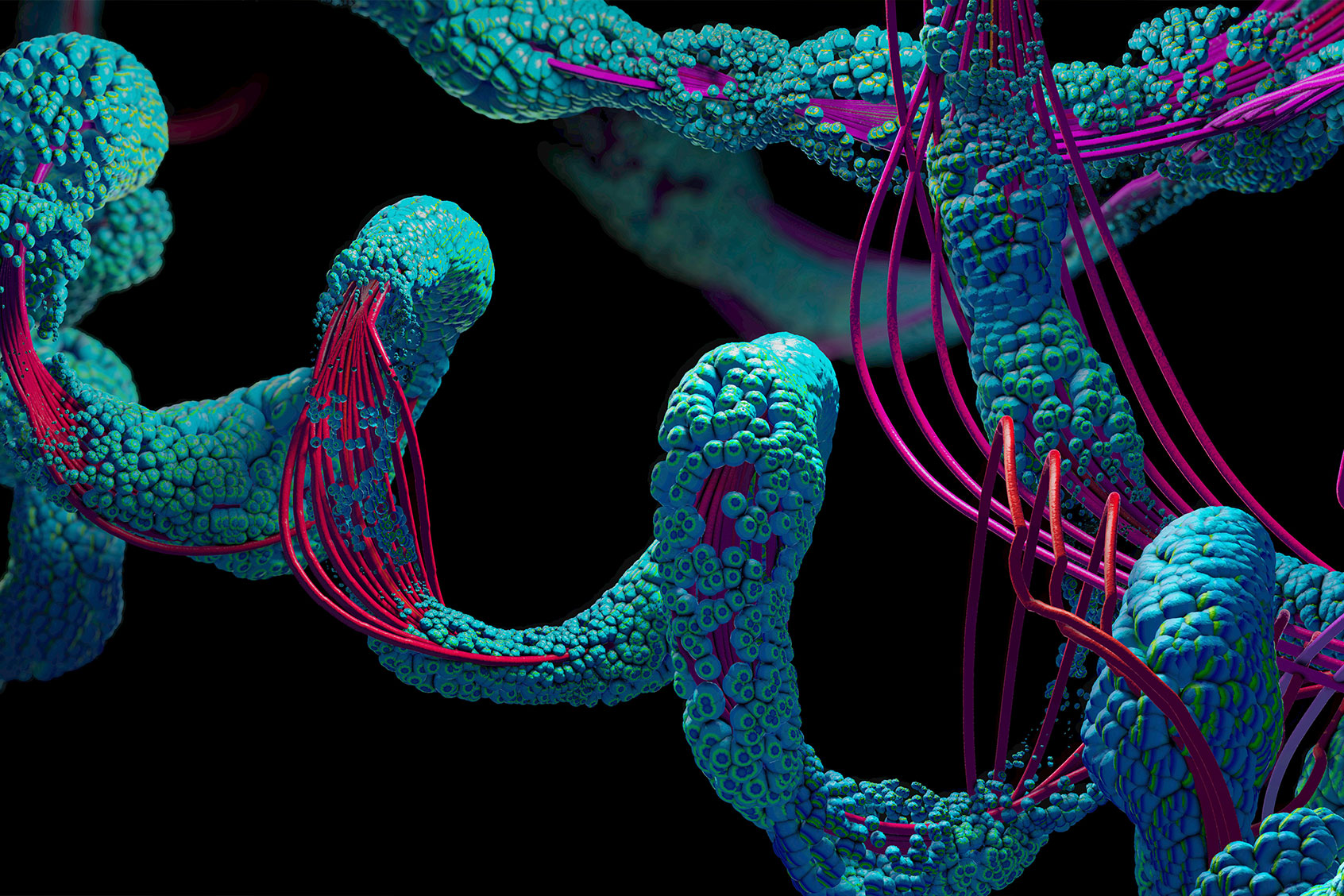How life emerged on Earth is among the most significant mysteries in science. Though it remains an open question in biology, scientists have some pretty promising theories as to how a chemical soup eventually generated complex, cellular life some 3.7 billion years ago. But a theory is more than just a good guess — it needs to explain the available evidence, and it also needs to be testable.
Scientists believe that amino acids existed in great abundance in the Earth’s early years, and that these pieces contributed to create the first cell.
There is ample data suggesting that single-celled organisms slowly emerged from the random assemblage of chemicals floating around in water. For instance, we can see signatures of ancient life in the form of microbial mats, which are sheets of dead, fossilized microbes that form in sediment or on the surfaces of rocks. We can estimate their age with radiometric dating, and chemical analysis, which gives us a sense of when life began.
We can even test this theory, using experiments that simulate our best estimates of what an ancient Earth was like. In 1952, the Miller-Urey Experiment, for example, simulated the conditions of Earth’s early atmosphere by passing electrical sparks through a mixture of gases (primarily methane, ammonia, and hydrogen). The experiment produced several organic compounds, including amino acids, which are the building blocks of proteins. Indeed, scientists believe that amino acids existed in great abundance in the Earth’s early years, and that these pieces contributed to create the first cell.
Amino acids are like the letters in an alphabet, while proteins are like words. With enough proteins, you can form “sentences” — in this case, biological pathways that are a little like microscopic Rube Goldberg machines that allow life to do, well, everything.
Proteins are not considered alive by most biologists. They are large, complex molecules made up of long chains of amino acids, which are essential to the structure and function of all living organisms. So where do you draw the line between unliving protein and living organism? It comes down to those pathways, governed by the grammar of biology, which we call DNA.
In other words, understanding how life started means figuring out how DNA formed in the first place. And understanding what Earth looked like prior to the emergence of life — and what kinds of amino acids and proteins were swirling around — means that we are one step closer to understanding how life emerged.
Even though hundreds of different amino acids may have been present on the early Earth, all living things rely on only about 20 of these compounds.
Now, a new study in the Journal of the American Chemical Society suggests that evolution began long before life emerged and that proteins swirling around in the primordial soup selected for preferable traits. In other words, there was a sort of Darwinian selection effect taking place (even prior to the emergence of life) among the un-living proteins and amino acids in the primordial soup.
This idea explains why, even though hundreds of different amino acids may have been present on the early Earth, all living things rely on only about 20 of these compounds. So why did these specific amino acids get picked?
“You see the same amino acids in every organism, from humans to bacteria to archaea, and that’s because all things on Earth are connected through this tree of life that has an origin, an organism that was the ancestor to all living things,” Stephen Fried, a Johns Hopkins chemist who co-led the research with scientists at Charles University in the Czech Republic, said in a statement. “We’re describing the events that shaped why that ancestor got the amino acids that it did.”
While there are 20 amino acids that are important, increasing evidence suggests ancient life first arose using just 10. To test this, the experimenters created several different libraries of various amino acids combinations and then screened them for two things: their solubility and secondary structure propensities. It sounds complicated (and it is) but these terms simply relate to the proper shapes of proteins.
Protein shapes and how they fold are pretty critical to their function. This determines how they interact with other molecules and their environment. Think of them like a sheet of origami paper that can be folded into many different patterns.
So by testing which libraries had the best solubility and structure, the researchers could conclude that proteins were evolving and driving natural selection before even forming living things. Over time, the proteins that were the best shape for biochemical processes were incorporated into the fundamental cycles of life.
Want more health and science stories in your inbox? Subscribe to Salon’s weekly newsletter The Vulgar Scientist.
“Protein folding was basically allowing us to do evolution before there was even life on our planet,” Fried said. “You could have evolution before you had biology, you could have natural selection for the chemicals that are useful for life even before there was DNA.”
“To have evolution in the Darwinian sense, you need to have this whole sophisticated way of turning genetic molecules like DNA and RNA into proteins. But replicating DNA also requires proteins, so we have a chicken-and-egg problem,” Fried added. “Our research shows that nature could have selected for building blocks with useful properties before Darwinian evolution.”
Of course, the more we study how life formed on our planet, the better we can estimate how life on other planets may form. Amino acids are abundant in asteroids, suggesting the conditions for alien lifeforms to spawn exist in other corners of the universe.
“The universe seems to love amino acids,” Fried said. “Maybe if we found life on a different planet, it wouldn’t be that different.”

